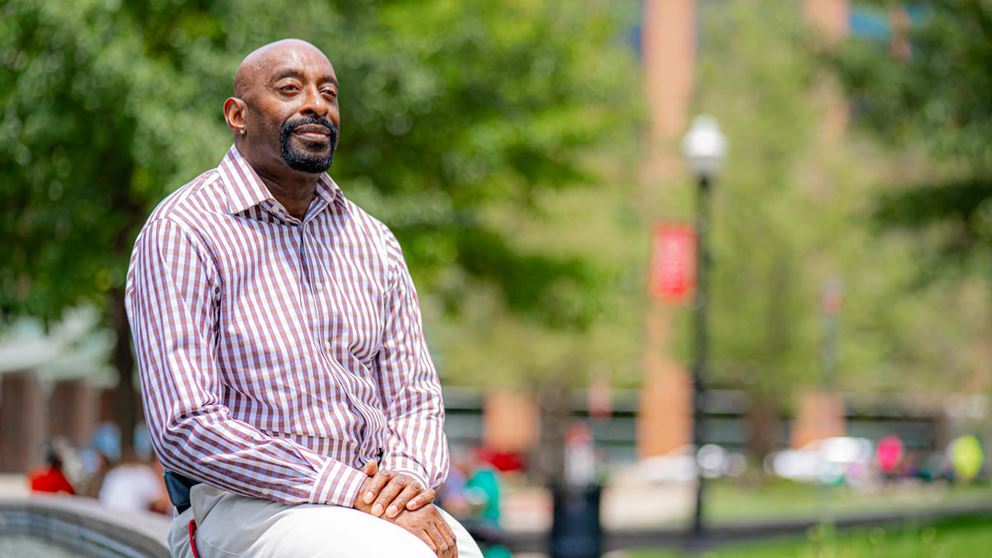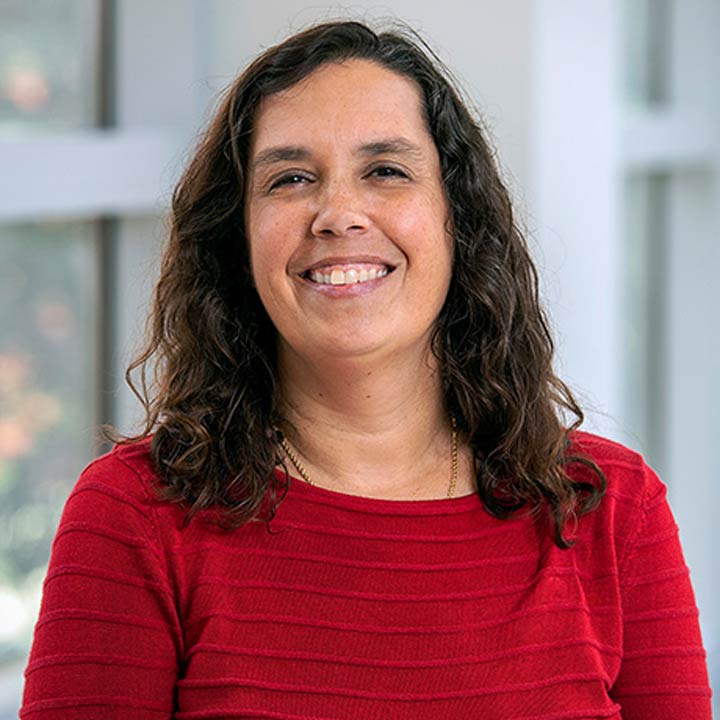From the brink of death, an AIDS patient's survival
Marko Phillips' diagnosis of HIV was considered a death sentence. But thanks to his care team and advances in HIV treatment, Marko went from languishing in hospice care to living with hope.
It was at death’s door where Marko Phillips found his will to live. Like so many other AIDS patients in the 1990s, he was angry, sad, depressed and lonely. It was 1999 and the 39-year-old was lying in a hospice bed in Cleveland, Ohio, his body ravaged by AIDS, drifting in and out of consciousness in a childlike state of mind.
His skin was shedding like a snake and he was confined to a bed or wheelchair, unable to walk. Unwilling to accept his AIDS diagnosis from five years earlier, Phillips kept trying to leave and had to be strapped down. Looking back at the nearly one year he spent in hospice, Phillips described it as when part of his life “zeroed out.”
“I don’t remember all of it, but my sisters do and they’ve helped fill in the gaps. They are my memory,” he said.
As medication pulsed through his body and a nurse reassured him that he was slowly getting better, something took hold that Phillips hadn’t felt for a long time — hope. Family members and a couple of friends started visiting him and after so much time withdrawing into himself, he realized he wasn’t alone. He felt a stir to live again.
“I was petrified when I was diagnosed with AIDS. I knew people who were living with and dying of AIDS,” he said. “I felt no one would want to love me and be with me. I’d been showing symptoms for years and knew what was going on but I was in denial. I just wanted to hide away. It took me years to open up to my family that I was positive (for AIDS). Life was very depressing.”
Released from hospice and living with a friend, Phillips focused on getting better. He choked down 14 pills daily, stopped smoking and overcame his fear of needles to self-administer shots in his stomach and thigh. In just three months, his CD4 T cell count, which measures how healthy his immune system is, went from zero to 175. He started going to an AIDS support group to learn about the latest research, share his story and lean on others. A social worker helped him get Medicaid, food stamps and a place to live. He started seeing a psychiatrist to help him deal with his depression.

“One day I woke up and said, ‘This is my life and I’m going to live it.’ The inner side of me came out,” Phillips said.
“I kept saying to myself mentally, ‘I can do this, I can do this. I’m going to get better. There’s nothing else that’s going to stop me.’ It makes such a difference when you feel someone cares.”
As Phillips’ body started to heal, his confidence returned and he felt drawn to help those who were experiencing the crushing depression and loneliness that he had been suffering for years. He started working at a housing unit for dying AIDS patients, cooking meals and providing care during the overnight shift.
“I was warned what it would be like working there, to not get emotionally involved. But because you knew some of them, it was hard to not become emotionally involved,” he lamented. “This was something I really wanted to do since I was getting better. I wanted to put myself out there for them.”
Just as his family had been there to support him in hospice, Phillips answered the call to help his sister when her husband died. Before he moved to Columbus in 2012, his doctor in Cleveland asked where he wanted to continue his AIDS treatment. He chose The Ohio State University Wexner Medical Center at the recommendation of his doctor.
“Before I left Cleveland, Susan Koletar, MD sent me a letter introducing herself. That was helpful and inspiring,” he said of Koletar, director of the Ohio State Wexner Medical Center’s Division of Infectious Diseases, who helped connect him with a care coordinator so he could more easily navigate the health care system.
Today, Phillips takes just four pills a day, is a healthy 198 pounds after dropping to a low of 132 pounds while in hospice and is active with his work as a real estate leasing specialist. Every six to eight months, he checks in with his current Ohio State physician, Carlos Malvestutto, MD, who has been involved with HIV/AIDS treatment and research for years.
“Dr. Malvestutto has been a lifeline for me. He’s really been very supportive of me in every sense of the word. My life has increased with the education, the support, the doctors, the social workers … but being here in Columbus has really enlightened my life,” Phillips said. “The staff of Ohio State are just excellent. When I have my appointments, they call me, they text me … it’s such a difference here. I get such a family sort of togetherness feeling with Ohio State.”
A blood test can tell if you have HIV infection. Your health care provider can perform the test, or you can call the national referral hotline at 1-800-CDC-INFO (24 hours a day, 1-800-232-4636 in English and en español; 1-888-232-6348 - TTY).
From the forefront to 40 years later, reflecting on the HIV crisis
Ohio State doctors share lessons learned from the HIV/AIDS pandemic and how they shaped COVID-19 care.
Read the full story





